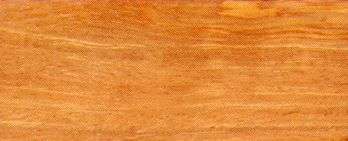
Bam-kung (Cynometra polyandra)
Family: Leguminosae
Common names: Bam-kung, Belangkan, Bonsuthai-buphang, Chherasu, Dieng-rai-heh, Dieng-soh pyda, Dila dila, Dila-dila, Katong, Katong-katong, Kekatong, Korhai-ha, Mangkha, Nanop, Ping, Rang-koroi-ching, Thing-changleing-theing
Distributed in: Burma, China, India, Malaysia, Papua New Guinea, Philippines, Thailand (Oceania and S.E. Asia)
Common uses: Agricultural implements, Boat building (general), Boxes and crates, Cabinetmaking, Carvings, Charcoal, Door, Flooring, Flooring: commercial heavy traffic, Fuelwood, Furniture, Handles: general, Heavy construction, Joinery, Ladders, Light construction, Mine timbers, Oars, Plywood, Poles, Railroad ties, Sporting Goods, Structural work, Tool handles, Toys, Turnery, Veneer, Veneer: decorative
Tree size: Trunk diameter is 100-150 cm
Colors: the heart isReddish brown, Yellow to golden-yellow to orangeand the sapwoodPaler than heartwood
.The grain isWavy, the textureMedium to coarseand the lusterMedium
Natural durability: Susceptible to attack from powder post (Lyctid & Bostrychid) beetles, Susceptible to marine borer attack
Silica Content: Siliceous
Kiln Schedules: Dry at a slow speed
Drying Defects: Severe surface checking, Severe twisting/warping
Ease of Drying: Variable results.
Tree Identification: Bole/stem form is not buttressed
Comments: General finishing qualities are rated as good
Blunting Effect: High to severe
Boring: Fairly easy to very easy
Carving: Fairly Easy to Very Easy
Cutting Resistance: Fairly Difficult to Very Difficult to saw
Gluing: Fairly Easy to Very Easy
Mortising: Fairly Easy to Very Easy
Moulding: Fairly Easy to Very Easy
Movement in Service: Fairly Easy to Very Easy
Nailing: Fair to Good , Very Good to Excellent
Planing: Planes well, to a good finish
Resistance to Impregnation: Sapwood is permeable
Resistance to Splitting: Poor
Response to hand tools: Responds Readily
Routing recessing: Fairly Easy to Very Easy
Veneering qualities: Suitable for peeling, Suitable for slicing
Screwing: Fairly Easy to Very Easy, Very Good to Excellent Results; Turning: Turns with moderate ease
Polishing: Satisfactory;
- Numerical data Metric
- Numerical data English
- Strength properties
- References
 |
 |
 |
 |
| Item |
Green |
Dry |
Metric |
| Specific Gravity |
|
|
|
| Density |
|
865 |
kg/m3 |
| Bending Strength |
899 |
1391 |
kg/cm2 |
| Crushing Strength |
509 |
727 |
kg/cm2 |
| Hardness |
|
1131 |
kg |
| Impact Strength |
|
129 |
cm |
| Shearing Strength |
|
177 |
kg/cm2 |
| Stiffness |
155 |
179 |
1000 kg/cm2 |
| Tangential Shrinkage |
7 |
|
% |
| Radial Shrinkage |
3 |
|
% |
| Weight |
849 |
737 |
kg/m3 |
| Maximum Load |
|
|
cm-kg/cm3 |
| Toughness |
|
|
cm-kg |
| Static Bending |
|
|
kg/cm2 |
|
 |  |  |  | | Item | Green | Dry | English | | Bending Strength | 12800 | 19794 | psi | | Density | | 54 | lbs/ft3 | | Hardness | | 2495 | lbs | | Impact Strength | | 51 | inches | | Maximum Crushing Strength | 7247 | 10350 | psi | | Shearing Strength | | 2525 | psi | | Stiffness | 2213 | 2552 | 1000 psi | | Weight | 53 | 46 | lbs/ft3 | | Radial Shrinkage | 3 | | % | | Tangential Shrinkage | 7 | | % | | Volumetric Shrinkage | 13 | | % | |
Bending strength (MOR) = high 0
Modulus of Elasticity (stiffness) = high
Max. crushing strength = high
Hardness (side grain) = hard
Toghness-Hammer drop (Impact Strength) = high
Density (dry weight) = 61-67 lbs/cu. ft
Density (dry weight) = 53-60 lbs/cu.ft.
Shrinkage, Tangential = fairly large
Shrinkage, Radial = small
Shrinkage, Radial = moderate
Bending strength (MOR) = medium
Toughness-Hammer drop (Impact Strength) = medium
Shrinkage, Volumetric = fairly large
Shrinkage, Tangential = very small
Shrinkage, Tangential = small
Shrinkage, Tangential = moderate
Shrinkage, Radial = very small
Shearing strength (parallel to grain) = medium
Shearing strength (parallel to grain) = high
Modulus of Elasticity (stiffness) = very high
Max. crushing strength = very high
Density (dry weight) = 67-75 lbs/cu. ft.
Density (dry weight) = 46-52 lbs/cu. ft.
Hardness (side grain) = very hard
Burgess, P.F.,1966,Timbers of Sabah,Sabah Forest Record, no.6Chudnoff, M.,1984,Tropical Timbers of the World,U.S.A. Department of Agriculture, Forest Service, Forest Products,Laboratory, Madison.Desch, H.E.,1954,Manual of Malayan Timbers (2 vols,Malayan Forest Records,no.15I. Soerianegara and R.H.M.J. Lemmens (Editors,1993,Plant Resources of South-East Asia 5,(PROSEA, 1,Timber trees: Major commercial timbers,Pudoc Scientific Publishers, Wageningen 1993Keating, W.G., Bolza, E.,1982,Characteristics properties and uses of timbers. South East Asia, Northern,Australia and the Pacific,C.S.I.R.O. Div. Chemical Technology,Inkata Press,1Lee, Y.H., et al,1974,Commercial Timbers of Peninsular Malaysia,Kuala Lumpur Malaysia Department of Forestry Peninsular Malaysia and,Malaysian Timber Industry BoardMenon, P.K.B.,1959,The wood anatomy of Malayan timbers: commercial timbers, 3. Light,hardwoods,Malaysian Forest Research Institute Kepong, Research Pamplet, No. 27.Oey Djoen Seng,1964,Specific gravity of Indonesian woods and its significance for practical,use,Communication No.1. Lembaga Penelitian Hasil Hutan, Bogor, IndonesiaPearson, R.S., Brown, H.P.,1932,Commercial Timbers of India,Govt. Printer Calcutta,2 volsRamesh, Rao K., Purkayastha, S.K.,1972,Indian Woods - Their Identification Properties and Uses,Dehra Dun India,Vol. 3Reyes, L.J.,1938,Philippine Woods,Commonwealth of the Philippines Department of Agriculture and Commerce,Technical Bulletin,No.7Sekhar, A.C.,1967,Some Indian Timbers Equivalent to Foreign Timbers,Van Vigyan 5(1&2,pp18-24Tewari, M.C., Jain, J.C.,1980,Utilization of Secondary Species,Journal of the National Building Organization 25(2) pp1-6Whitmore, T.C. (Ed.,1972,Tree Flora of Malaya A Manual for Foresters Volume 1,Forest Department Ministry of Agriculture and Lands Malaysia
|








